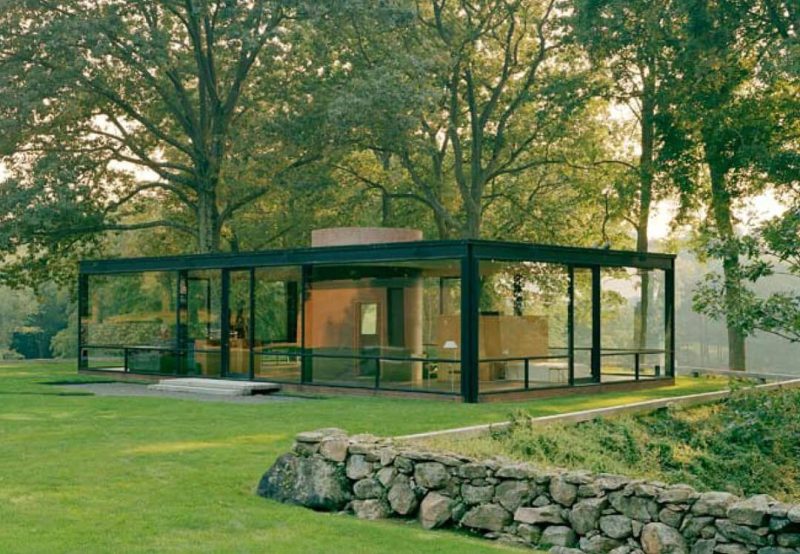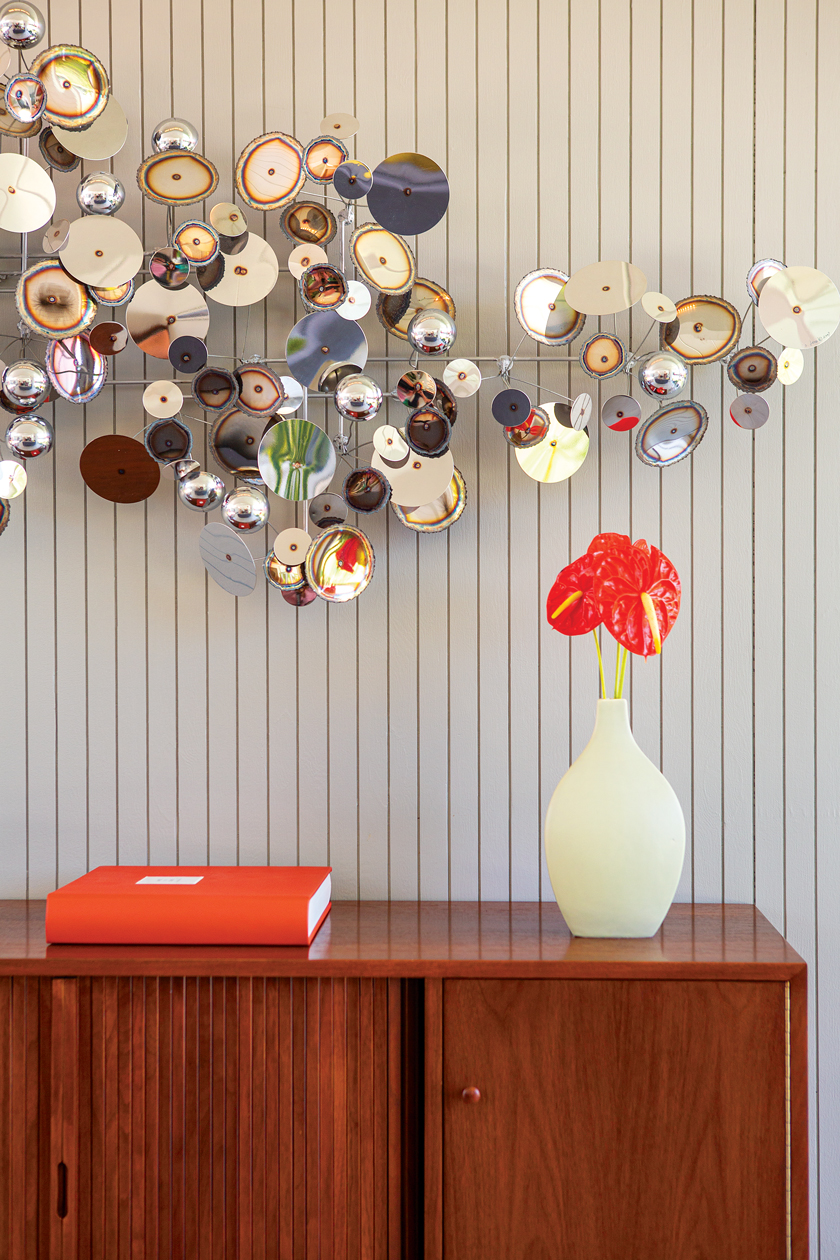While in New Canaan, Connecticut, you have the opportunity to tour the Glass House, also called the “Johnson House,” the most celebrated structure designed by Philip Johnson.
Standing on the green lawn and looking through the transparent walls to the serene, open interior, you may feel you have entered an idyllic space. The structure exists in harmony with its environment, scarcely intruding on the greenery around it with its orderly minimalist lines.
Nevertheless, the transparent walls that flood the interior with natural light stand on a dark and divisive foundation. Philip Johnson may have been one of America’s most influential architects—but the man himself harbored destructive ideals.
Light from Darkness, Form from Fire
Philip Johnson was a Nazi sympathizer. Indeed, he was an active participant in the movement, visiting the front lines and writing propaganda by invitation of the Third Reich. He referred to the burning of Warsaw as “a stirring spectacle.”

In Philip Johnson: A Visual Biography, Ian Volner writes, “The cylindrical brick volume, breaking the simplicity of the steel box, was once likened by Philip to a ruined village he had seen years before. He meant, of course, a place he’d seen in Poland during his fascist period. As historian Anthony Vidler once wrote, the Glass House could then be read as ‘a Polish farmhouse “purified” by the fire of war of everything but its architectural “essence”’: an uncanny echo of a dark past, lurking within the familiar icon of American glamor.’”
It is difficult not to get poetic when talking about the Glass House, but it is important not to lose sight of the stark horror of those burning farmhouses. We are glad that something beautiful did arise out of Johnson’s moral ugliness, but that beauty in no way redeems that ugliness. The destruction wrought by the Nazis is unforgivable, as is Johnson’s sympathy for their actions. The sunlight spilling through the Glass House’s walls makes the darkness no less dark. Its pleasing form does nothing to repair the ruin to Polish communities in WWII.
Inside the Glass House

Straightaway, you will notice not only the Barcelona furnishings, but also the building’s overall resemblance to works by Ludwig Mies van der Rohe. This was no coincidence. Indeed, Johnson commented, “In the case of the Glass House, the stylistic approach is perfectly clear. Mies van der Rohe and I had discussed how you could build a glass house and each of us built one. Mies’ was, of course, primary and mine was an adoption from the master, although it’s quite a different approach.”
Specifically, Johnson took his inspiration from Mies van der Rohe’s Farnsworth House. Mies van der Rohe himself was not amused. Volner wrote, “Philip’s homage to the recently emigrated eminence was not warmly received by Mies—his first visit ended in a drunken rage.”

The architecture features three divisions, each of which is a Golden Rectangle. You can view some interesting pictures and analysis of the proportions here. You will notice that there are no interior walls to break up the glass. That means that no matter where you stand in the home, you can experience the entire surrounding landscape.

Johnson lived 58 years on the premises. His companion, David Whitney, handled the landscape design and art curation for the grounds. Indeed, the Glass House does not stand alone on the property. There are a number of additional structures, some of which served practical purposes, others which were there as follies.

While there are no walls dividing the interior space into rooms, there is one brick pillar. Within it is the bathroom, offering privacy when needed.
On the subject of privacy, the grounds provided plenty of seclusion. But Phaidon, publisher of Volner’s book, notes that Johnson was intrigued by “that little edge of danger” imposed by see-through walls. The publisher notes the irony, which was that Johnson was under investigation for sedition, and needed to destroy evidence. When he did, he turned to the fireplace that is housed in the same brick pillar as the bathroom in the Glass House to do so.
While Johnson’s history is troubling, there is no denying that the Glass House itself is a complement to the Connecticut landscape and one of the most important International Style landmarks in America. It also offers a window through which to learn more about WWII and post-war history. Learn more or plan your visit at the official Glass House website.
Want to learn more about the influence of International Style? Read about the structures and designs that helped define US mid mod here! And of course, don’t forget to follow us on Instagram, Facebook and Pinterest for more Atomic Ranch articles and ideas!












